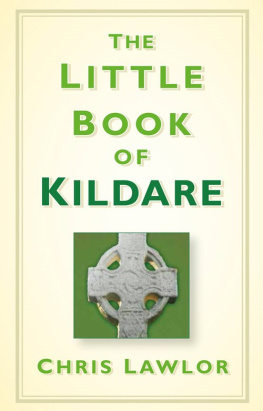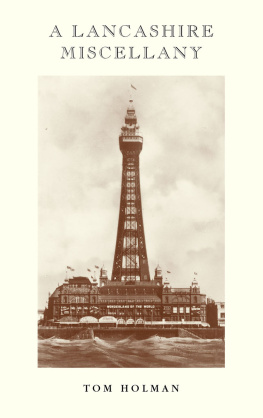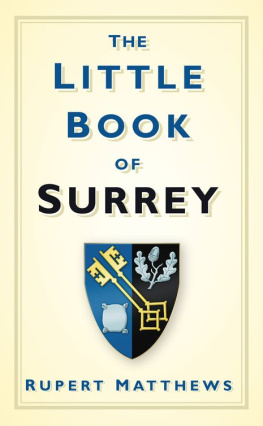
To my nans,
Doris, Irene and Lillian,
who helped ignite my love of history.
First published in 2017
The History Press
The Mill, Brimscombe Port
Stroud, Gloucestershire, GL5 2QG
www.thehistorypress.co.uk
This ebook edition first published in 2017
All rights reserved
Natasha Sheldon, 2017
The right of Natasha Sheldon to be identified as the Author of this work has been asserted in accordance with the Copyright, Designs and Patents Act 1988.
This ebook is copyright material and must not be copied, reproduced, transferred, distributed, leased, licensed or publicly performed or used in any way except as specifically permitted in writing by the publishers, as allowed under the terms and conditions under which it was purchased or as strictly permitted by applicable copyright law. Any unauthorised distribution or use of this text may be a direct infringement of the authors and publishers rights, and those responsible may be liable in law accordingly.
EPUB ISBN 978 0 7509 8470 6
Original typesetting by The History Press
eBook converted by Geethik Technologies
CONTENTS
ABOUT THE AUTHOR
NATASHA SHELDON lives in Leicester and studied Ancient History and Archaeology at the citys university. Passionate about local history, archaeology and travel writing, she is the author of Not a Guide to Leicester and Leicester in 100 Dates with The History Press, and is also the columnist for the online site Decoded Past (www.decodedpast.com).
INTRODUCTION
The name Laegrecastrescir was first recoded in 1087. But Leicestershire is much older.
To the Saxons it was the Kingdom of Mercia. To the Romans it was at the hub of Roman Britain. To the Celts it was the land of the Corieltauvi, a fierce warlike tribe. To the Vikings it was part of the Dane law.
Leicestershire has so often been the backdrop for many of the turning points in British history. Kings have been killed and buried here, and royal dynasties have changed. Leicestershire has been the birthplace of rebels and heroes, movers and shakers, who have changed Britain and even the world.
Leicestershires land has its own unique character, shaped long ago. Its geology has dictated the industries that have made Leicestershires towns great and the foods that have made the county famous.
Leicestershire has always been a meeting place of people and a melting pot of cultures from prehistory, and no more so than today. It is one of Britains most diverse counties and its most recent incomers have only enriched the countys already rich scheme of traditions
To include everything about Leicestershire in a book of this size is impossible. Instead, I have tried to concentrate on producing a potted history, using whimsical, amusing, little known and occasionally disturbing tales, facts and anecdotes that illustrate everything that makes Leicestershire unique.
It is my hope that this brief journey through Leicestershires past and present will amuse and inform in equal measure.
Natasha Sheldon
2017
1
NATURAL LEICESTER
THE MAKING OF LEICESTERSHIRE
Leicestershire marks the centre of England or rather, the geographical centre of England is in Leicestershire. This landmark spot is at Ordinance Survey ref. SP 36373.66, 96143.05, which falls at Lindley Hall Farm, near Fenny Drayton and Higham.
The county shares its borders with Rutland, Northamptonshire, Warwickshire, Derbyshire, Lincolnshire and Staffordshire. Within those borders are 208,289 hectares of farmland, woodland and towns.
But this wasnt always the case
The Story of the Land
In the beginning there was lava lots of lava.
Some 600 million years ago, Precambrian Leicestershire was submerged under a shallow sea, studded with volcanic islands. The islands constantly spewed out ash and lava, which eventually formed the countys oldest layers of igneous rock. These rocks, visible in the Charnwood region around Blackbrook Reservoir and Switherland Wood, are one of Englands few exposures of Precambrian rock.
Bardon Hill, an extinct volcano in north-west Leicestershire, is a relic of those times. It is also the highest point in Leicestershire, reaching 912ft above sea level. John Curtis, a nineteenth-century entomologist, described it as one of the most extraordinary points of view in nature. Even today, the view from the hills summit in clear weather allows views of Shropshire, the Malvern Hills and the not so distant Lincoln Cathedral.
Time passed. The primal sea retreated and the mud it left behind began to form into Leicestershires famous Switherland Slate. Not long afterwards, the magmas began to cool to form the pink and grey granite of Mountsorrel, which today is the location of the largest quarry in Europe.
About 420 million years ago, Leicestershire and the rest of the landmass it occupied, was on the move. This seismic relocation wrinkled the land. In Leicestershire, one of these folds survives as the Thringston Fault, which forms the eastern border between Leicestershire and Derbyshire.
The fault line also acted as a border for the Leicestershire coalfield in the north of the county. These coalfields were formed in the carboniferous era, when the warm primal seas that had re-flooded the land drained to become swamps and forests which in their turn died away to become coal. At the same time limestone deposits were forming around the area of Grace Dieu.
At the end of this era the rivers took over, depositing fluvial deposits to form Shepshed Sandstone.
Further west, much of Leicestershires landscape is mainly deposits of boulder and Liassic clay, dropped by busy glaciers during the last ice age. The ice formed many of Leicestershires valleys such as the Vale of Belvoir. Just north of the vale is the lowest point in Leicestershire where the land dips to just 24.8m above sea level. It can be found just along a bend in a minor road near Bottesford and the River Devon, near the border with Northamptonshire.
FOSSILS AND DINOSAURS
The Leicester Mammoth
On 28 October 1863, a strange object was found during the construction of a sewer off Belgrave Road. The object was 9ft 7in long and 2ft in circumference. It would have been longer but, unfortunately, the workmen who discovered it unwittingly lost 2-3ft of it before they realised they had something unusual on their hands.
Once discovered, the workmen were unsure quite what it was they had found only that it wasnt modern. After some debate, they settled on it being an old Roman column, but called in the experts to be on the safe side.
The column was sent to local geologist, Mr James Plant, who declared it to be the tusk of elephas primigenius a mammoth.
An excited Mr Plant hotfooted it to the site and was fortunate to find the ground undisturbed. The tusk had been discovered on a 3ft layer of red marl dating to around 180 million years ago. However, Plant concluded that the beast was not contemporary with this layer. Instead, its body had sunk through younger, softer gravel above until it came to rest on the more ancient layers. This dated the mammoth to 20,000 years ago.
The Leicester mammoth made the national headlines, with even The Times taking an interest in the doings of the Leicester drain. Experts arrived and declared that at 16ft, the tusk was even larger that the specimen in the British Museum.

Next page














